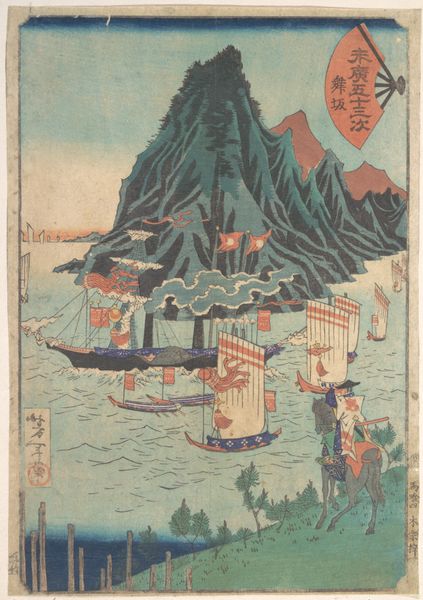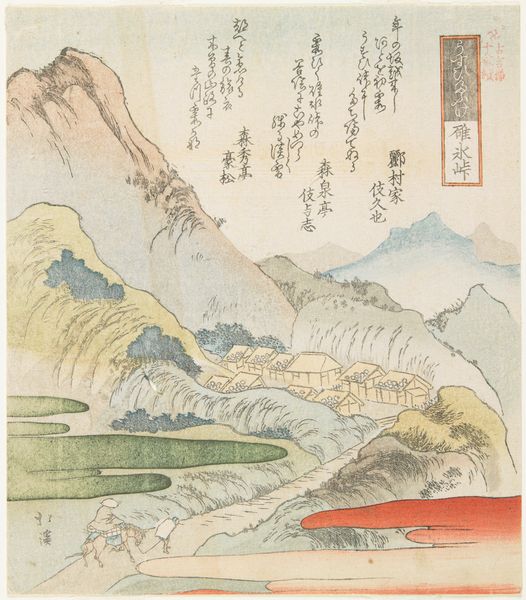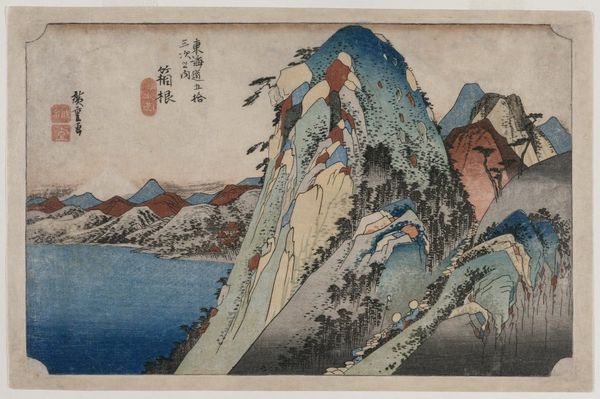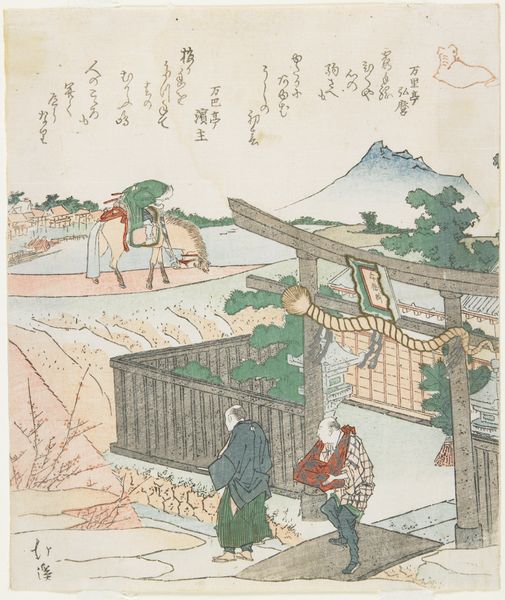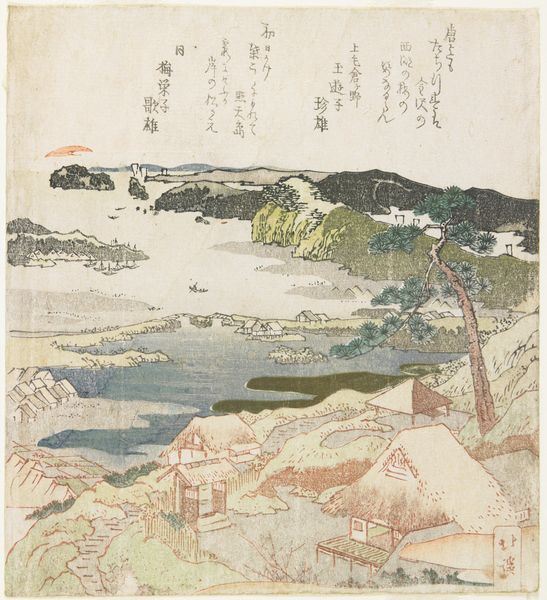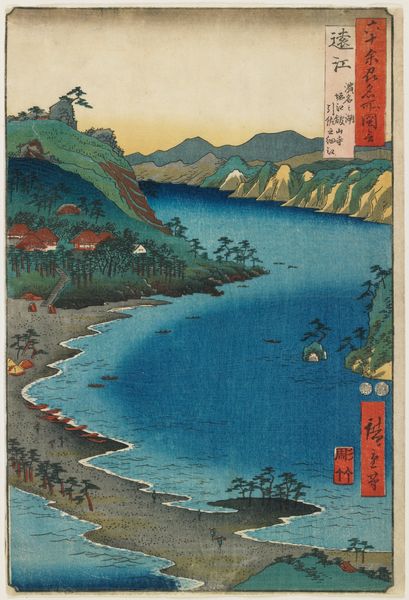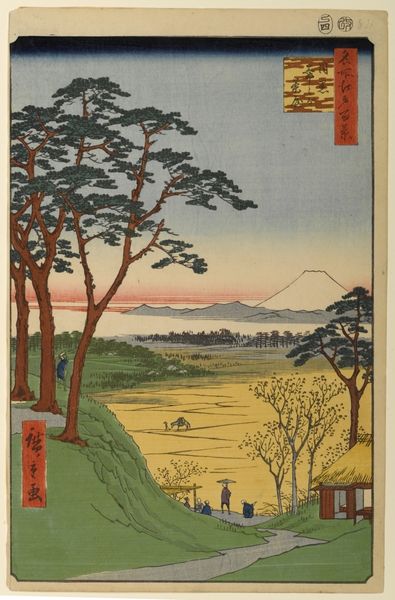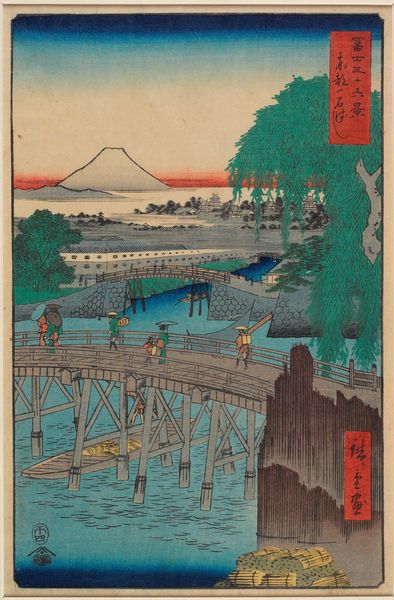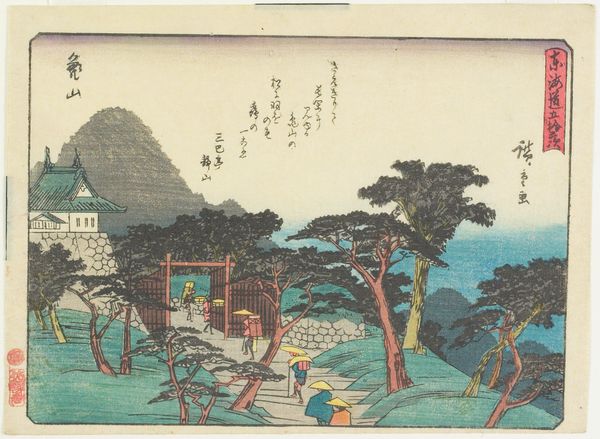
print, woodblock-print
# print
#
asian-art
#
landscape
#
ukiyo-e
#
woodblock-print
Dimensions: 8 x 6 7/8 in. (20.3 x 17.5 cm) (image, sheet)
Copyright: Public Domain
Editor: This is "Ryūdo," a woodblock print from 1833 by Totoya Hokkei, housed here at the Minneapolis Institute of Art. It has a rather picturesque quality. It gives me a distinct sense of being invited to a serene and almost hidden gathering, set against a vista that's both calming and inspiring. What springs to mind when you look at this piece? Curator: Ah, a picnic on a precipice! It's pure Hokkei, blending the intimacy of daily life with the grandeur of nature. Do you see the figures perched near the edge? They remind me of storytellers weaving tales as dramatic as the landscape. Hokkei’s not just depicting a scene, he's conjuring a shared moment, a collective breath held in the face of something awe-inspiring. The perspective almost feels… precariously balanced, doesn't it? Editor: Yes, it’s intriguing. The inclusion of text adds another layer. What’s your read on its significance? Curator: Good eye! The poems dance with the imagery. Ukiyo-e prints weren't merely pictures but synergistic experiences, harmonizing words, images, and emotions. It makes me wonder... were these written by those enjoying this vista? Was this shared later in life and made popular? Did people come here with dreams of finding clarity, sharing intimate moments with their kin? Or did they simply come to snack by the seaside? Either way, Hokkei creates a little world that’s endlessly enticing. It’s less a snapshot and more an open-ended invitation. Editor: I never considered how integral those details were to the overall experience of ukiyo-e. Now, thinking about it, the figures blend so well with nature. Curator: Absolutely! Hokkei masterfully weaves them into the landscape, making it hard to distinguish man from mountains. And to that point - how do you feel the looming peak of Mt. Fuji fits into all this? Does it serve to bring people together or place things in perspective? Editor: I suppose in either case, both. Thank you. I'll remember this whenever I approach Japanese art!
Comments
minneapolisinstituteofart almost 2 years ago
⋮
Located off Shōnan Beach, Enoshima Island was accessible via a land bridge at low tide. Housing a shrine dedicated to Benzaiten, a goddess of music, the island attracted people who liked to combine travelling with religious pilgrimage. Because of its proximity to the capital city of Edo-about thirty miles away-Enoshima was particularly popular among urban residents. Surrounded by the Pacific Ocean on three sides, this spot afforded a magnificent view of Mount Fuji and became a popular picnic site. The artist, Hokkei, included a group of people sitting on a red blanket, joyfully eating and drinking together. From his sixteen-print series "Trip to Enoshima Island," this print depicts the final destination of such a trip-the island and its mysterious Ryūdō, "dragon cave," shown in the lower right. The red border was added later and is not part of the original print.
Join the conversation
Join millions of artists and users on Artera today and experience the ultimate creative platform.
